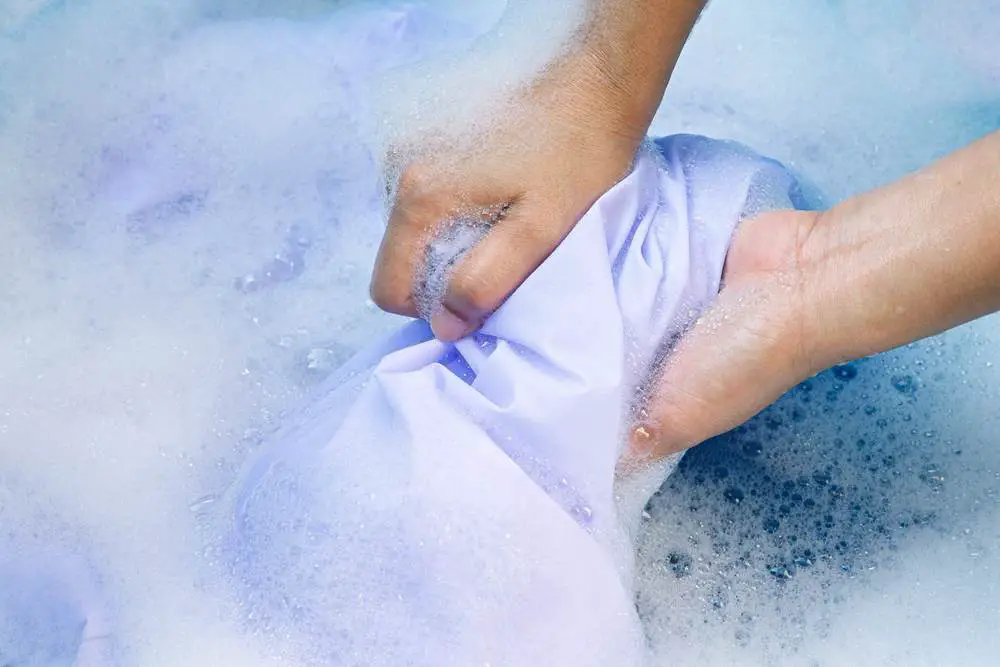
Quilts are beautiful works of art that can last for generations when cared for properly. Washing a quilt requires special care to avoid damaging the fabric, batting or stitching. Proper washing helps remove soils, perspiration, oils and musty odors while revitalizing the quilt.
This complete guide will provide step-by-step instructions on how to wash quilts of various sizes and materials correctly. We will cover supplies needed, hand washing, machine washing, drying, stain removal and storing cleaned quilts. With these tips, you can keep your heirloom and antique quilts looking vibrant for years to come.
Table of Contents
Supplies Needed
Before washing, gather the following supplies:
- Mild laundry detergent – Look for a gentle, enzyme-free detergent.
- Color catchers – These sheets capture excess dye during washing to prevent colors from running or transferring.
- Quilt wash bag – A mesh bag allows water to flow through while protecting the quilt.
- Old towels – Use these to pad the washing machine and aid in drying.
- Quilt drying rack or clothesline
- Stain remover (optional) – For tough stains, use a gentle oxygen bleach alternative.
- Rubber gloves (optional) – For hand washing, gloves protect your hands from hot water.
How To Hand Wash A Quilt

Hand washing in a bathtub allows you to thoroughly clean a quilt while having more control over the process. Follow these steps:
Step 1 – Prepare The Tub
Fill a bathtub with lukewarm water and add a small amount of mild detergent. Agitate the water to create suds. The water should only be ankle deep so you can easily move the quilt around.
Place a clean white towel in the bottom of the tub to pad it for the quilt. The towel prevents the quilt from rubbing against the harsh surface.
Step 2 – Soak The Quilt
Gently place the quilt in the tub saturated with sudsy water. Push down to allow the quilt to fully soak and settle into the clean water.
To keep colors from running or bleeding, add a color catcher sheet. Let it soak for 15-30 minutes so the fabric absorbs water and detergent fully.
Step 3 – Hand Wash
Wearing rubber gloves, gently wash the quilt by squeezing suds repeatedly through the layers of fabric. Do not rub, twist or scrub as this can damage the quilt.
Focus on any visibly soiled areas first. Rinse thoroughly in clean water, changing it as needed until water runs clear. Repeat this process as necessary until quilt is clean.
Step 4 – Drain and Rinse
Once washed, carefully lift the quilt from the tub and drain the dirty water. Refill the tub with cool, clean water to rinse. Rinse several times until water is completely soap-free.
Step 5 – Dry
After rinsing thoroughly, gently lift and squeeze excess water from the quilt. Lay flat on towels to absorb moisture. Change towels as needed.
You may line dry, draping quilt over multiple clothes lines to support the weight. Or dry flat outside or in a well-ventilated area, turning periodically until completely dry.
How To Machine Wash A Quilt

For large or heavy quilts, machine washing makes the process easier. Follow these steps:
Step 1 – Preparation
Before washing, inspect quilt for loose threads, damage or stains. Clip any stray threads. Use a stain remover on problem areas, following product instructions carefully.
Close zippers, hooks, buttons and embellishments that may catch on the machine or damage the quilt.
Step 2 – Load The Machine
Place the quilt inside a mesh wash bag and zip closed. This keeps the quilt contained while allowing water flow.
Set your washing machine to the gentle or delicate cycle with cool water. Choose an extra slow spin speed.
Add two color catcher sheets and a mild detergent to the machine. Load the bagged quilt separately – do not add other items which could cause tangling.
Step 3 – Wash Cycle
Allow the washing machine to fill with water and gently agitate the quilt. Let it soak for 15 minutes once filled.
Restart the wash cycle to allow fresh water and soap to fully permeate fabric. If needed, use a stain pretreatment stick on stubborn stains.
Rinse with cool clean water at least twice to remove all soap residue. This prevents detergent buildup on the quilt.
Step 4 – Dry
Remove promptly from the washer after the final rinse. Hang or lay flat immediately to prevent mildew in any folded sections.
Machine drying can damage a quilt, so air drying is best. Lay flat on a drying rack or over multiple clothes lines until completely dry.
How To Dry A Hand or Machine Washed Quilt
Proper drying is key to avoiding damage, mold or mildew. Follow these drying tips:
- Lay quilt flat or hang evenly to dry – Avoid folds during drying which can crease fabric.
- Air dry only – Machine drying risks shrinking or tearing delicate quilts. Never apply heat.
- Change position occasionally – Turn a flat drying quilt over periodically so all sections dry evenly.
- Use fans if needed – Direct fans towards quilt to speed drying in humid climates. Rotate positions.
- Dry indoors or shade outdoors – Direct sunlight can fade colors; indoor heat can dry too quickly causing damage.
- Check for dampness – Make sure thick layers and inner sections are completely dry before removing or storing to avoid mildew.
How To Remove Stains From A Quilt
To remove stubborn stains from a quilt, follow these steps:
Step 1: Identify the stain and fabric type of the stained portion of the quilt. Prepare a stain treatment suitable for the fabric.
Step 2: For mud, coffee, wine or dirt stains on cotton or polyester, pre-treat with a oxygen bleach alternative like OxiClean. Check label for use instructions.
Step 3: For oils, grease, makeup or food, apply a small amount of dish soap directly on the stain and brush gently with warm water.
Step 4: For ink marks, nail polish or permanent marker, use rubbing alcohol or hairspray. Test on an inconspicuous area first.
Step 5: For hard water marks, calcium deposits, or rust stains, use white vinegar or lemon juice. Let soak for an hour before washing.
Step 6: For dye stains, blot with hydrogen peroxide before washing. For wax or chocolate, freeze then gently scrape off excess before washing.
Step 7: For mildew stains, spray vinegar water solution. Dry under sunlight; the ultraviolet rays help remove mildew.
Step 8: For perspiration or deodorant marks, make a paste with baking soda and water. Let sit 1-2 hours before washing.
Step 9: Rinse thoroughly after treatment and check stain is removed before washing entire quilt. Repeat stain treatment if needed.
How To Store A Clean Quilt
After washing and fully drying a quilt, follow these tips to properly store and protect your quilt:
- Refold carefully along existing creases to avoid new wrinkles or creases.
- Place quilt inside a breathable cotton pillowcase or muslin to protect from dust and light. Avoid plastic which can trap moisture.
- If quilt will be stored long term, consider archival tissue paper between folds to prevent permanent creases. Change the paper yearly.
- Store flat, if possible – Fold only if essential for storage space. Avoid tightly rolling quilts when storing.
- Use acid-free archive boxes, chests or shelving if not displayed. Keep stored quilts in a climate controlled, dry indoor area.
- Inspect quilts in storage once a year – Check for insects, humidity, fading, or staining issues. Unfold and refold along a different crease to maintain shape.
- Consider displays, rotations or airings to give heavily stored quilts “rest” periods without the weight of folding.
- Before use or display, let quilt acclimate for several days after long term storage by leaving unfolded to release creases.
Frequently Asked Questions
1. How often should I wash a quilt?
Only wash a quilt when visibly soiled or musty smelling. Quilts used daily or seasonally may need washing every few months. Heirloom quilts only need washing every few years, depending on storage conditions.
2. Can I put a quilt in the dryer?
Never tumble dry or apply heat when drying a quilt. Always air dry only, laid flat or hanging. Even low heat drying can damage, shrink or tear delicate quilts.
3. What if my quilt has bleeding dye when washed?
Rinse immediately with cool water. Soak in a solution of 1 quart cool water and 1/2 teaspoon salt for up to 30 minutes to remove excess dye. Rinse thoroughly until water runs clear.
4. How do I wash quilts too large for my machine?
Use a bathtub for washing oversized quilts. Fill with cool water and mild detergent. Soak, then gently wash by hand. Drain and rinse. Lay flat with towels between layers to absorb moisture.
5. Can I wash an antique quilt or one with embellishments?
It’s best to have extremely delicate, aged or embellished quilts professionally cleaned to avoid damage. For hand washing, take extra care around beading, ribbons, buttons etc.
Conclusion
With proper techniques, even heirloom and delicate quilts can be safely washed and maintained for generations. Always use mild detergent and cool water temperatures to gently clean. Rinse thoroughly and air dry away from direct sunlight. Follow these instructions carefully to keep your quilts looking vibrant and fresh after each wash.